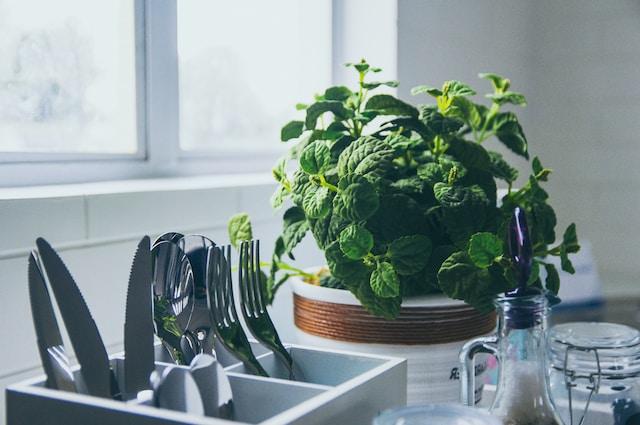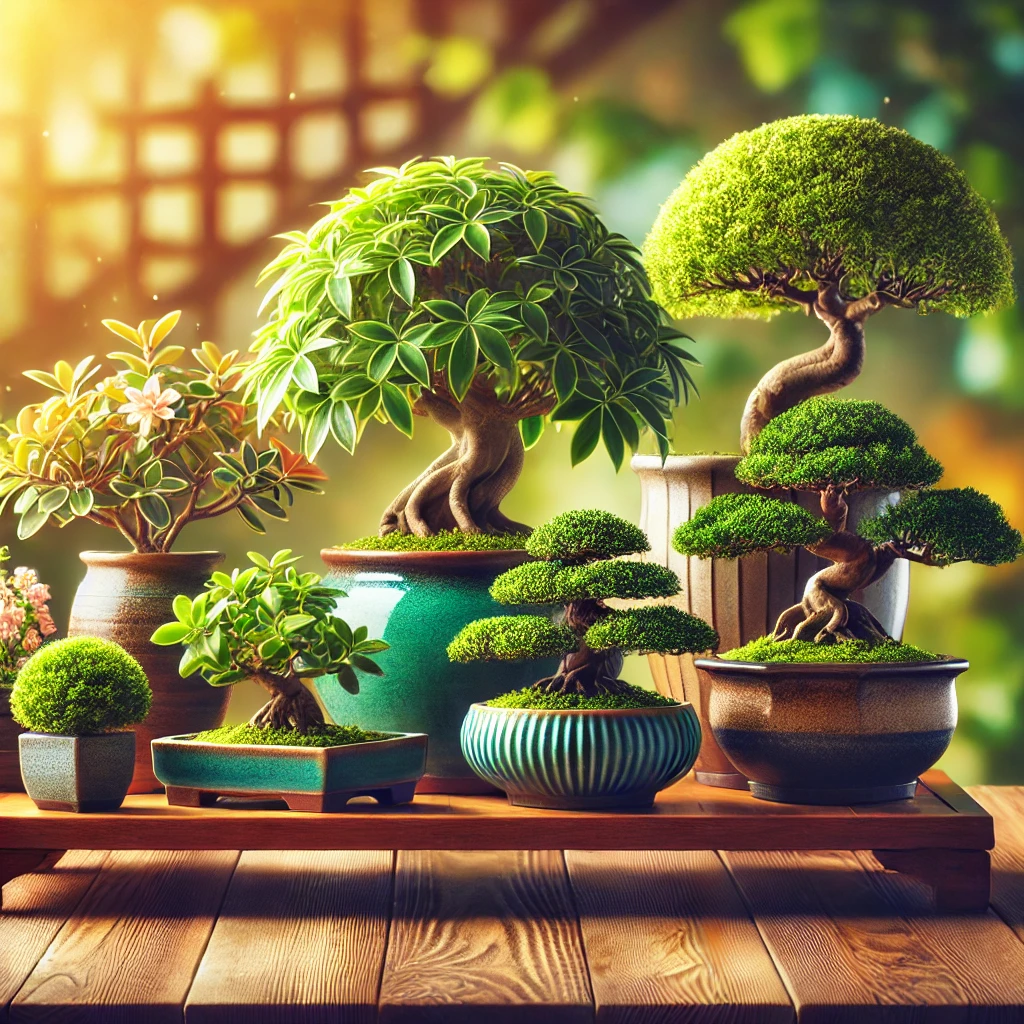Every room in the home deserves a splash of greenery, including the kitchen. Potted plants, herbs, and fresh blooms add a refreshing touch of nature, creating a sense of serenity and simplicity alongside adding color and character. The right plant can clean the air, increase morale, and act as your natural first aid kit. E.g., aloe vera can be used to treat burns. The kitchen isn’t the first room that comes to mind when picking out a spot for your new plant. Still, it’s an excellent place for houseplants as it has good ventilation with large windows that ensure plenty of light and fresh air.
As we head toward the end of autumn and the beginning of winter, it’s essential to choose plants that withstand cooler conditions. Improper temperature can be an issue, but fluctuations in temperature are the real killer. An easy way to tell your indoor plants are struggling is if their leaves begin to drop. Colder temperatures can stunt growth and, more severely, cause the greenery to die. If this happens, move your plants to a warmer room. Depending on the size of the kitchen, ordinary heating may not be enough. Space in the kitchen is often limited, but even the smallest houseplant is ideal for shelves, worktops, and corners.
You spend a lot of time in the kitchen, so why not surround yourself with plants and instantly connect to the earth? Indoor plants have a way of making any space feel alive and vibrant. The question now is: What plants will thrive in your kitchen? Well, if you really want to find out, keep on reading.
Aloe Vera
Aloe Vera is a flowering succulent that can be grown indoors as a houseplant, with favorable growing conditions, including a lot of light, but limited direct sun. You should let it dry between waterings because it doesn’t like sitting in water. Water roughly every three weeks and even more sparingly during the cold months of the year. Commonly referred to as the “plant of immortality”, aloe vera is an impossible-to-kill houseplant, meaning it’s easy to care for even if you don’t have a green thumb. You should keep it next to the stove. In case you burn yourself, pinch off a leaf and squeeze the jelly-like substance onto the burn.
As mentioned earlier, aloe vera needs indirect sunlight, so ensure the leaves don’t touch the glass window panes. They’ll only intensify the sun and scorch the leaves. Aloe vera is simple in appearance, helping create a minimalistic feel. The concept of less is more is making its way into various aspects of our lives, including kitchen design. In a world filled with constant clutter, handleless kitchens are inherently soothing. If you, too, are a minimalist, make informed decisions about what plants to choose. Low-maintenance plants like aloe vera look stunning against the backdrop of a minimal home.
Herbs
Since the dawn of time, herbs have been used to add flavor to meals. You can add a little bit of freshness before serving or add flavorings at the beginning or end of cooking. Herbs are the leaves of the plant that are used when cooking and can include parsley, chives, basil, oregano, rosemary, and more. Needless to say, fresh herbs on your counters are a must-have, so plant little pots (and enjoy getting your fingers in the dirt). Herbs can be used in an unlimited number of ways; the more you use them, the more adventurous you’ll become. If you have a sunny window, a small pot of basil and rosemary will thrive.
Every herb has singular growing needs, so ensure you have the right light, humidity, and air circulation conditions. If you want to plant your kitchen herb garden from seeds, do it before the first frost of the winter. There’s no reason to plant too far in advance because you can start snipping the herbs in just a few weeks. It’s not a good idea to place the herbs near drafts, radiators, or heat ducts because they’ll dry out and lose their flavor. Rotate the herbs on a regular basis so that each plant gets some sunlight. Those long hours produce the oils that give them their unique aromas, so the more sun, the better.
English Ivy
English ivy is a green, lush plant that you can hang over your sink or by a window. It works in hanging baskets, pots, or trained as a topiary. The vines may grow at a slow pace in the beginning, but they can extend to 50 feet eventually. Most species of ivy are easy care plants, but to keep them growing at their best, water thoroughly and deeply. The soil and container should drain well. Avoid fertilizing in the winter because it’s the plant’s dormant period, and the fertilizer will do more harm than good. The English ivy is a sturdy plant, so it can adapt to survive in wintertime.
Asparagus Fern
The asparagus fern is relatively easy to care for indoors. For the best results as a potted plant, it should be placed in indirect or filtered light; a north or east-facing window provides the right amount of light. Even if the asparagus fern looks soft to the touch, it’s sharp, so wear gardening gloves if you want to prune an older plant. It needs a minimum temperature of 13 degrees, so keep the asparagus fern away from droughts and radiators. It does require a fairly high humidity level, so a spot like the kitchen is ideal.
An asparagus fern looks great when grouped with other plants, especially those with contrasting leaves. If the plant is happy, it will produce small white flowers and berries, but it’s usually grown for its foliage. Reduce watering in autumn and water even more sparingly in winter. Ensure humidity by grouping plants together or misting them on a regular basis. If not, it can lose its luscious appeal; low levels of humidity can cause the leaves to turn brown and dry out. The asparagus fern may need to be divided or repotted. In that case, you can use a larger container. A larger container is of the essence because the crowns must be planted deeply.
To complement your kitchen’s natural charm with a touch of personal style, consider showcasing your favorite plants with a creative and eye-catching flyer that not only adds a decorative element but also provides useful care tips for each plant. After the sentence: Space in the kitchen is often limited, but even the smallest houseplant is ideal for shelves, worktops, and corners.
Conclusion
If you feel the need to embrace a botanical-inspired kitchen, there’s no better time than now to ramp up the greenery. A shelf, an unused corner of the countertop, or a hanging planter will keep the plants close but out of your way


